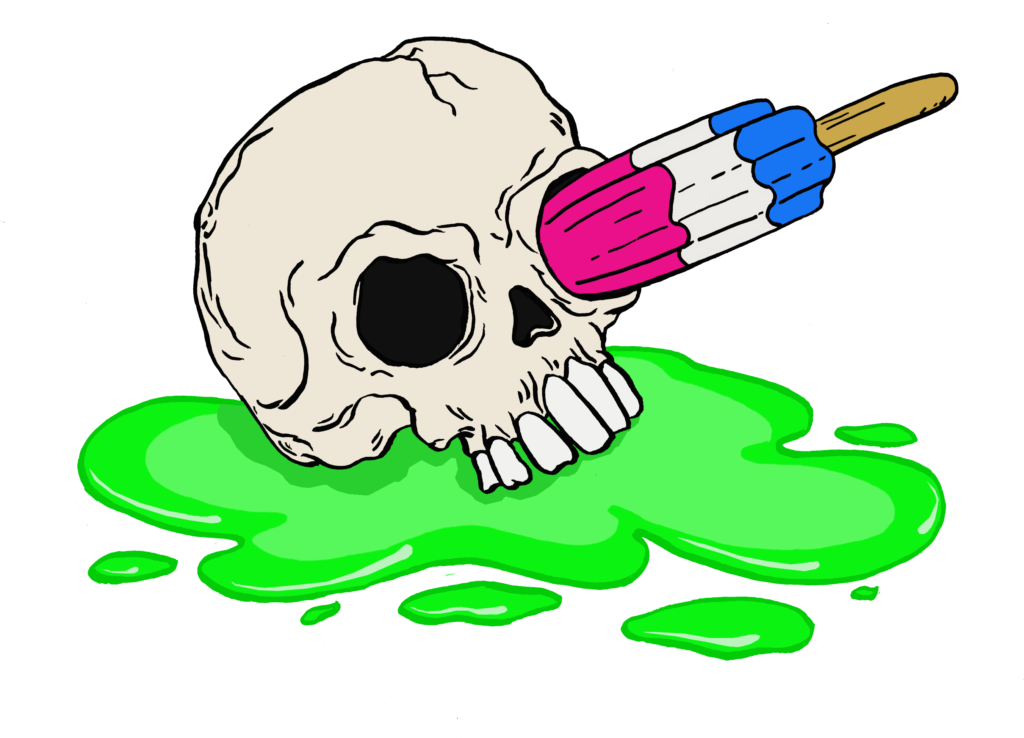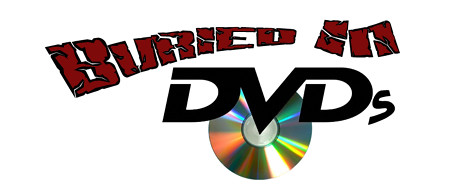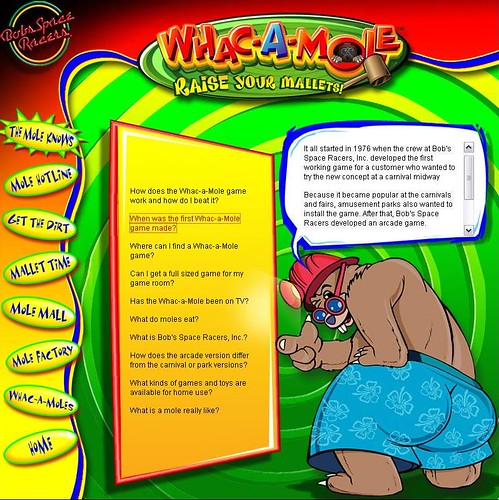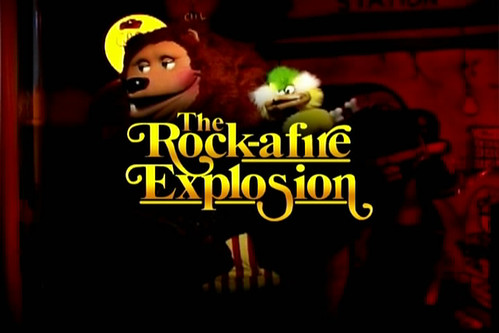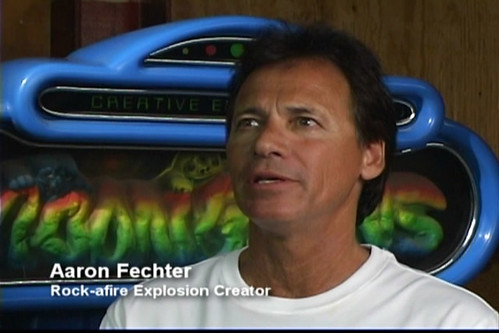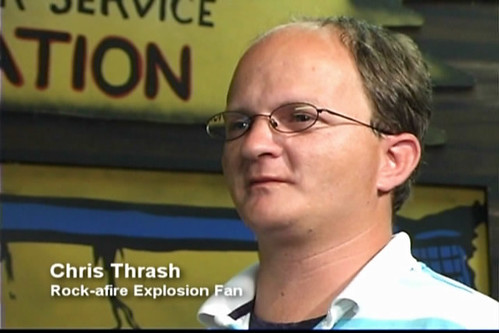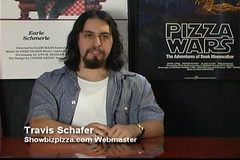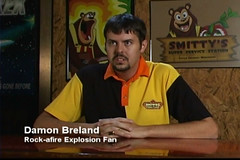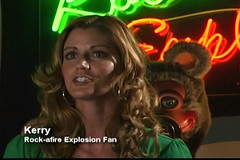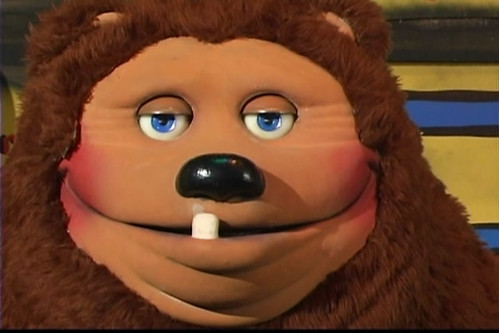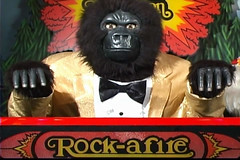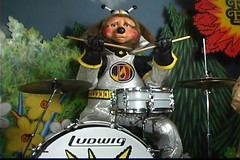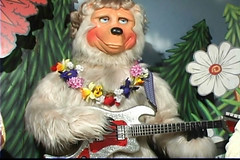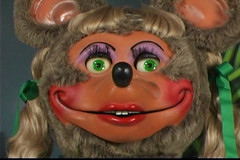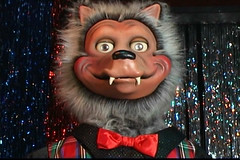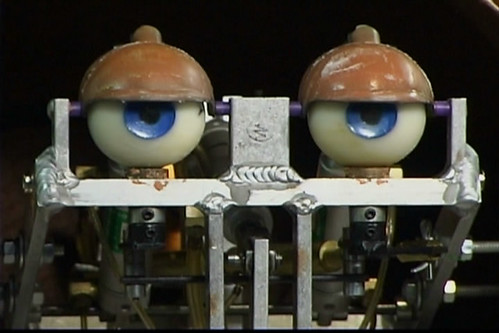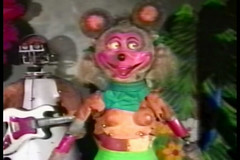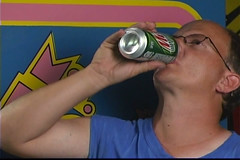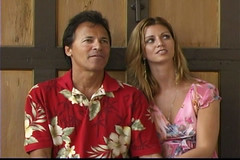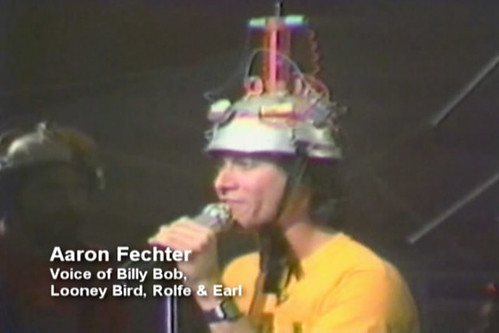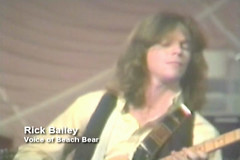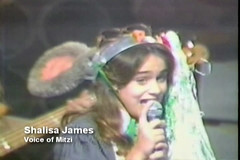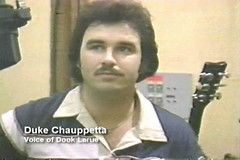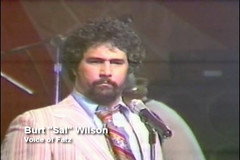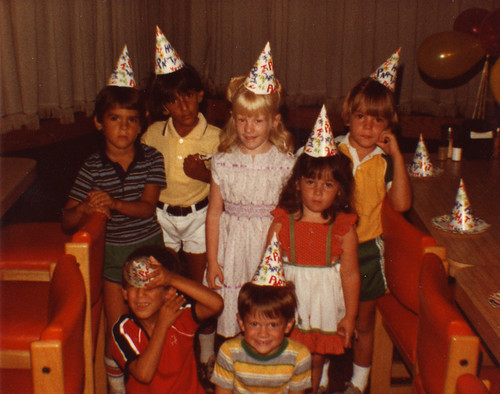After reviewing the documentary, Candyman: The Dave Klein story, the film (and Hillary Buckholtz over at I’m Remembering) reminded me that I had yet to talk about another flick that I’d been meaning to write about for a while, The Rock-afire Explosion. The two documentaries are very similar in that they focus on genius inventors who have been all but forgotten by their chosen industries and have gone under appreciated in the pop culture they helped to shape. I popped the flick back into the DVD player this weekend though and decided it’s time to share my thoughts…
All the world’s a stage and history is apparently nothing more than a collection of script revisions. Whether it’s the question of who invented the Jelly Belly jelly bean, or who designed and built the first Whac-a-Mole, the truth isn’t always what’s recorded. In the case of the Whac-a-Mole, a quick Google search leads to the company that “originated” it, Bob’s Space Racers. The website describes how it all began “…in 1976 when the crew at Bob’s Space Racers, Inc. developed the first working game for a customer who wanted to try the new concept at a carnival midway…”
What the site neglects to mention is that what they “developed” was reverse-engineered from a prototype they purchased that was designed and built by a guy named Aaron Fechter (who was developing it for a carnival that ended up selling it to Bob’s Space Racers.) Fechter even came up with the name for the game, Whac-a-Mole. Very similar to how Dave Klein was written out of the history of Jelly Belly, Aaron Fechter was dropped from the story of the Whac-a-Mole. But that’s not all there is to Fechter’s legacy, and the anecdote about the famous midway game is only a segway into a much more interesting story, the rise and fall of America’s most famous animatronic band, the Rock-afire Explosion!
For most kids growing up in the early 80s there was only one place they wanted to go for birthday parties and celebrations, Showbiz Pizza Place. It’s where a kid can be a kid, at least it was if you bought the pizza chain’s tag line, and from the ages of three to ten I was drunk on that company’s Kool-Aid. From Skee Ball, what seemed like hundreds of arcade games, ball pits, and the afore-mentioned Whac-a-Mole, to tiny completely-carpeted rooms lit by strobe lights under the main stage, game tickets, prizes, pizza, soda by the pitcher, and a little animatronic band called the Rock-afire Explosion, these were the ingredients for legendary birthday parties when I was a kid. I’ve podcasted and written about my love of Showbiz Pizza and Chuck-E-Cheese at length before, and how it’s almost impossible, even with some remaining C-E-C franchises still open, to get back that feeling of what it was like to dine and play in these establishments as a kid. Though I was lucky enough to grow up less than 30 miles from Walt Disney World, I can only imagine that for kids that lived in other states, Showbiz was like a mini Disney theme park. Sure, there weren’t any roller coasters or dark rides, but who cared about those when you had a band full of animatronic, anthropomorphic animals belting out great music from the 60s, 70s and 80s at your birthday party?
When I first started Branded in the 80s back in 2006, one of the first bits of obscure childhood bliss that I wanted to talk about was the Rock-afire Explosion. So when I discovered that there was a documentary detailing the rise and fall of the Showbiz Pizza phenomena, the band’s creator Aaron Fechter, and how a handful of fans have been striving to bring back the magic I was ecstatic…
Produced and directed by Brett Whitcomb, the film starts with a tone setting awkward pause as Aaron Fechter is gathering his thoughts about the legacy of his creation. Honestly, these first few seconds were a bit unnerving for me as I was afraid of the direction the film would take. If there’s one certainty about 80s era fandom, it’s that people either love it or mock it, and usually people just love to mock it. Though I personally find the sarcastic mean humor that’s rife with 80s homages boring and overdone, it’s the route that most people take, and when all is said and done this documentary walks a pretty precarious tightrope act, only dipping it’s toes into smarminess a couple of times.
The flick is comprised of a series of talking head interviews with Rock-afire Explosion creator Aaron Fechter (and his significant other Kerry), super-fans Chris Thrash, Mike Scherpenberg, Damon Breland, as well as showbizpizza.com head honcho Travis Schafer, intermixed with old vhs video footage of Showbiz commercials, local news clips, company tapes, and some vintage behind the scenes footage of Creative Engineering. Basically, we follow the story of Fechter, a genius inventor who graduated college at the age of 19, and Chris Thrash, a fan so dedicated to the Rock-afire Explosion that he sought out Fechter so that he could purchase his very own animatronic band. In a way, Thrash can be attributed with a lot of the recent fan-fair of the Rock-afire nostalgia as his desire to own a copy of the band, and through a series of youtube videos where he programmed them to play some current music has breathed new life into the property.
“I believe that you should be a child at heart and don’t be ashamed of it. Y ou know if there’s something you dreamed or you wanted to do when you was a kid, then do it. You dreamed it for a reason. And I dreamed to have this, and I had it. Some people like it, some people don’t, but I don’t care, it’s mine.” -Chris Thrash
As a kid, one of the coolest aspects of the band and stage show at Showbiz Pizza was that it was like seeing Sesame Street, the Muppets, or Pinwheel live, right in front of your eyes. In the film fan Mike Scherpenberg really puts in context what it was like for a kid when he says, “If you didn’t grow up with it, then you can’t understand what it meant. It was like meeting a real celebrity…” And it was. Even growing up in Orlando and having the opportunity to mingle with all of the “characters” at Disney World, seeing the Rock-afire Explosion was so much cooler because they talked and blinked, and ironically just felt more real. It was truly like seeing a cartoon character coming to life. Subsequently I probably would have flipped my lid had I realized that I lived so close to the home the Rock-afire, Creative Engineering in Orlando…
Looking back, one of the things I really respect was the amount of thought and back-story went into each of these characters. Whether it’s good-natured country bumpkin Billy Bob (the face of Showbiz), Fatz Geronimo (piano player and leader of the band), fan-favorite Dook Larue (the astro-dog who played some mean drums), Beach Bear (the resident cut-up, surfer, guitar playing polar bear), Mitzi (the slightly ditzy cheerleader mouse and only female on the stage), or even Rolfe & Earl (the Don Rickels of animatronics), each of these characters was unique and well thought out.
With that in mind, the filmmakers managed to address some odd aspects of this kind of fandom by cutting in both vintage footage of the Creative Engineering workshop with exposed endoskeletons of the various characters in production, as well as current bits with Thrash, Schafer, and Breland grooming their animatronics. It’s a not-so-subtle way of reminding the viewer that this fandom, as well as most fandom of fictional characters, is a little hollow and can be very strange the closer you get to it. There’s a bit where Thrash recalls pulling back the curtain once at a show and climbing on stage coming face to face with the frozen robots. It reminds me of Will Wheaton taking about his experience “meeting” the Muppets back in the 90s at the peak of his Star Trek popularity. As he watched the puppeteers open a series of drawers and pull the lifeless bodies of these characters out it sort of ruined the magic of the shows and movies. Personally, this is the sort of touching awkwardness that I can totally relate to, and I think it addresses an honest harshness of fandom, in particular this sort of extreme fandom. In fact, there’s a bit in the film that shows Mitzi Mozzarella being decommissioned as Showbiz was being integrated into Chuck-E Cheese, and there’s a quick shot of her right after some workers lifted off her cheerleader’s uniform. I actually gasped a bit at seeing the animatronic’s bare breasts exposed. What’s left of the kid in me found that weirdly obscene…
Where the documentary falls apart a little for me though, is when it strays away from this honest representation of fandom and wanders into more voyeuristic territory. Everyone has a little weird in them, and it’s no secret that geeks, nerds, dweebs and dorks typically have more than their fair share. The flick gets a little uncomfortable for me when it unfortunately starts to focus more on the quirks of the fans and of Aaron Fechter. It starts to feel like its taking advantage of them for entertainment’s sake, working in aspects of their lives that aren’t that important to the narrative. There’s a bit around the 25 minute mark where Thrash starts talking about his habitual Mountain Dew drinking, and you can feel the film shift away from a celebration of Showbiz Pizza and the Rock-Afire Explosion to his lifestyle as a person outside of the fandom. Similarly there are moments with Fechter and his relationship with super-fan Kerry that gives the impression that he’s kind of a creepy old man. I question whether this benefits the story the filmmakers are trying to convey, or if it sort of undermines any celebration of this nostalgia.
Lucklily these uncomfortable bits don’t go on for too long, and in the end the film gets back on track, digging into why Showbiz Pizza and the band are so interesting. I was glad to also get an opportunity to see some of the performers behind the characters as there’s some footage shot during one of the recording sessions that’s pretty interesting and features glimpses of Aaron Fechter (who voiced Billy Bob), Shalisa James (Mitzi), Rick Bailey (Beach Bear), Duke Chauppetta (Dook), and Burt Wilson (Fatz) performing. The music in the film is also great with some songs by the Super Furry Animals, and overall a great score. It’s also fascinating to see the extent that some of these fans go to, to reclaim a bit of their childhood. Purchasing whole shows (as the set up off all the animatronic characters are referred to in the documentary) for god only knows how much money and setting them up in specially constructed garages and rooms just blows me away.
All in all, there’s a lot to love about this documentary, and I wish there were more flicks out there like it shining the spotlight on some obscure but awesome bits of what it was like to grow up in the 80s.
As a last bit I thought I’d share two of my favorite pictures from celebrating my birthday at Showbiz as a kid. Though I look less than thrilled in the group photo (that’s me in the back on the right), I really did love that place…
